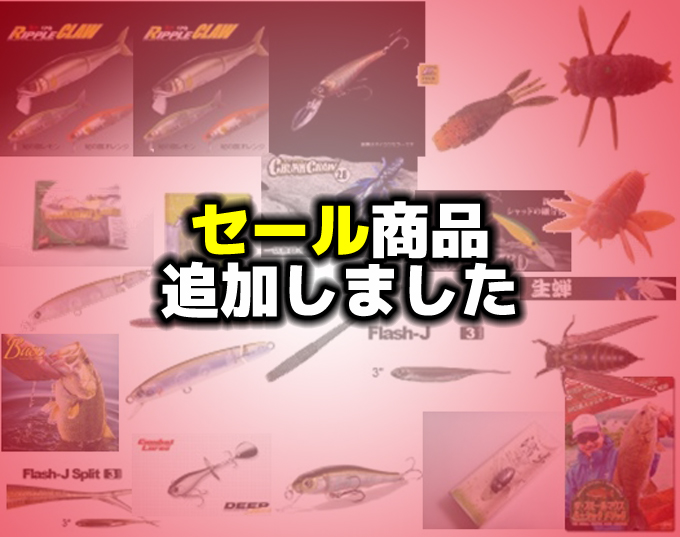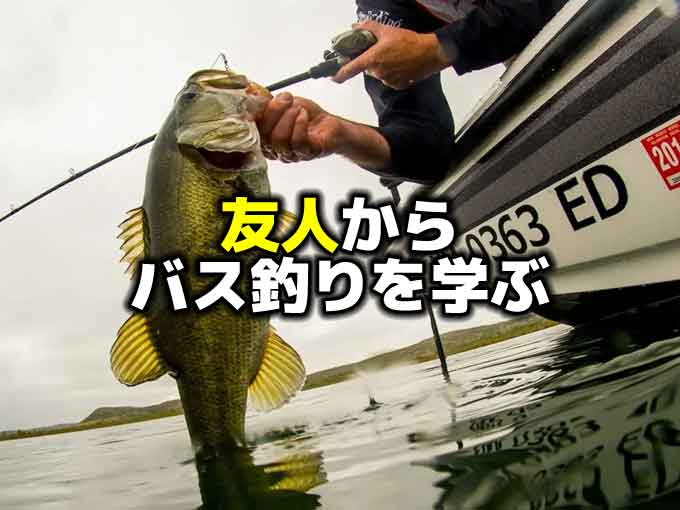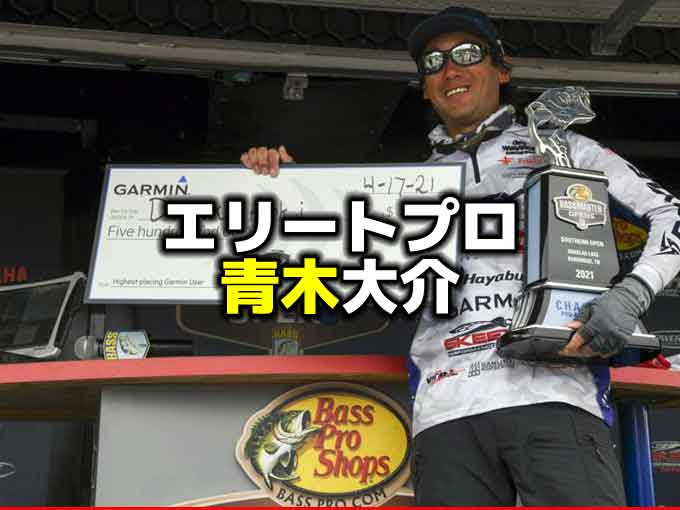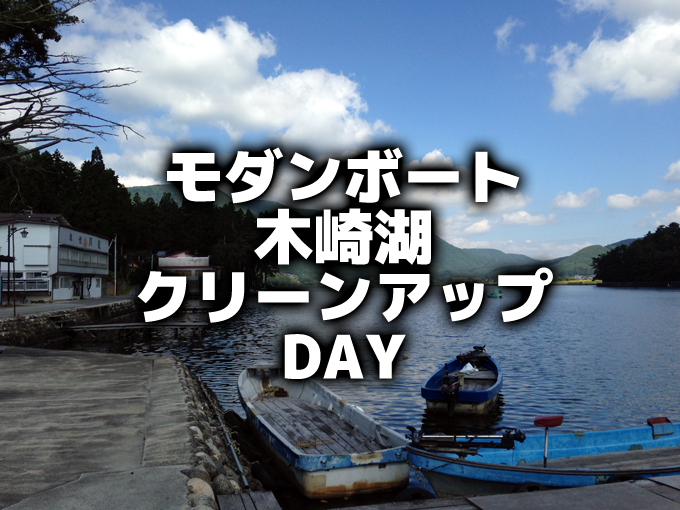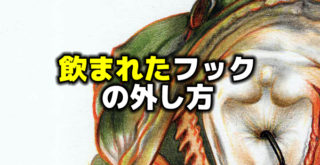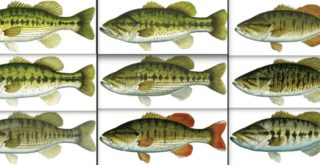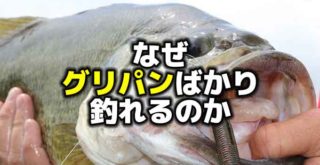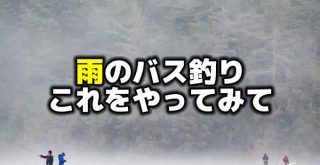今更聞けない、バス釣り用語

photo by Mystery Tackle Box
こんにちは!店長の小山です!
本日は海外のサイトより、”Everything you ever wanted to know about bass fishing but were too afraid to ask”という記事を引用してご紹介いたします。
引用先:Mystery Tackle Box”Everything you ever wanted to know about bass fishing but were too afraid to ask”(海外サイトです)
※この記事は2016年7月10日のものを再編集して掲載しています。
バス釣りにはとても多くの専門用語があります。そのなかには、アメリカで使われているものをそのまま使っている場合と、日本人にわかりやすいように言い換えられた場合があります。また、日本独自に生まれ、使われている言葉もあるのですが、そういう専門用語やその組み合わせが多いことで、極端な話、バス釣りが難しくなるということもあるのではないかと思います。
初心者であるうちはわからないことがあれば誰かに普通に聞けるのですが、上手になってくるとなぜか、だんだん人に聞くのが恥ずかしくなってきてしまうことって、誰にでもあるものです。簡単な用語のようで、初心者の人に教えようとすると「あれ?どういう意味だっけな?」となることがあっても不思議ではありません。
この記事は、アメリカのタックルショップ「Mystery Tackle Box」の記事で、そんな「今更聞けない」疑問や用語が解説されています。
初心者の方はもちろんこれを読んでいただければ少しでもバス釣りのことがより深く理解できると思いますし、初心者の方でなくとも、何か新しい発見があるかもしれません。
よろしければ、読んでいってください。
- 1. なぜバス釣りはこんなに楽しいのですか?
- 2. バス釣りをするにはどんなルアーが必要ですか?
- 3. 4/0フックとは何ですか?
- 4. EWGとは何のことですか?
- 5. スポーニングとは何ですか?
- 6. ベイトリールとスピニングリールの使い分けはどうしたらいいですか?
- 7. バックラッシュとは何ですか?
- 8. フロロカーボンライン、ナイロンライン、PEラインの違いって何ですか?
- 9. 何ポンドのラインを使えばいいのですか?
- 10. ノットは何を使えばいいですか?
- 11. リミットとは何ですか?
- 12. ”カル”とは何ですか?
- 13. ライブウェルとは何ですか?
- 14. バイトはどうやって気づけばいいですか?
- 15. フッキングとは何ですか?
- 16. フッキングはどうすればいいですか?
- 17. フッキングがうまく行ったら、どうやってランディングすればいいですか?
- 18. 過去最大のバスとはどれくらいですか?
- 19. 歴代の人気記事
- 20. オカッパリでもビッグバスは釣れますか?
なぜバス釣りはこんなに楽しいのですか?
Bass fishing is one of the most popular sports in America for many reasons and anglers fish for bass for many reasons. But a few of the most obvious reasons why people love bass fishing are:
- Bass can be found all over the country.
- Bass can get very big, ranging from 1 to 20lbs.
- Fishing for bass is exciting as they are aggressive fish (especially smallmouth bass!)
- Bass fishing is easy to learn with some practice and patience.
バス釣りは多くの理由からアメリカで最も人気のあるスポーツの一つであり、釣り人はいくつかの理由からバスを釣ろうとします。 しかし、人々がバス釣りを愛する理由は、次のとおりです。
- バスはあらゆるところで釣れるため。
- バスは1ポンドから20ポンドにわたって非常に大きくなることがあるため。
- アグレッシブな魚であるため、バス釣りはエキサイティングなのです(特にスモールマウス!)
- バスフィッシングは少しの練習と忍耐で覚えるのが簡単なため。
バス釣りをするにはどんなルアーが必要ですか?
Bass fishing is a regional and seasonal sport. The types of lures that work best for you will vary based on where you live and what season it is. But here are a few common lure types used to catch bass:
Crankbaits: Crankbaits are a cast-and-retrieve type lure that help you cover water fast when you search for active bass. However, many people make the mistake of simply casting and reeling it straight back. That means reel it, twitch it, knock it against stumps and rocks, and do anything else to make the crankbait move erratically. For beginners, try a shallow to medium diving crankbait to target the most aggressive bass in the area. Start with natural colors for clear water and chartreuse or dark colors for stained water.
Soft-plastics: It is safe to say that more fish have been caught on soft plastic baits than any other type of bait. Plastic worms, tubes, and creature baits do a great job mimicking natural forage. Starting out, a texas-rigged plastic worm is a great way to fish blown over trees, rocks, and vegetation because it is virtually weedless and snag-resistant.
Topwater: While topwaters may not always catch the most fish, they produce some of the most memorable, exciting fish strikes! Topwater baits like poppers and frogs are an absolute blast to use and they often attract the biggest and meanest bass in the water. Poppers and other topwater hard baits work great on main lake points, around standing timber, and along riprap banks. Frogs are designed to be fished in the thickest, nastiest cover you can find, but can also be effective in open water.
バス釣りは、地域的で季節的なスポーツです。あなたに最も適したルアーの種類は、あなたがどこに住んでいるか、どの季節かによって異なります。しかし、ここにバスを釣るために使用されている一般的なルアーを紹介します:
クランクベイト:クランクベイトはアクティブなバスを探すとき、手早くそして手広く探すのに役立つ、投げて巻くタイプのルアーです。しかし多くの人が、ただ単に投げてはまっすぐ巻くという誤りをしています。これは巻いたり、トゥイッチしたり、スタンプ(切り株)や岩に向かって当てていったりと、クランクベイトを不規則に動かせるようなことをします。初心者の方であればそのエリアで最もアグレッシブなバスを狙うためにシャロークランクかミディアムクランクを試してみてください。カラーはクリアウォーターであればナチュラルカラーを、ステインウォーターであればチャートや暗い色から始めてみてください。
ソフトプラスチック(ワーム):他のどんなルアーよりワームは多くの魚が釣れるといっても差し支えないでしょう。ワーム、チューブ、クリーチャー系ともに自然のエサによく似せています。テキサスリグから始めればウィードレス性能が高く根掛かりしずらいため、レイダウン、岩場、ベジテーションで使うと釣れやすいでしょう。
トップウォーター:トップの釣りは多くの魚を釣るというわけではありませんが、最も忘れがたい、激アツなバイトを生むルアーです!ポッパーやフロッグを使うことで、そのエリアで最も大きく賢いバスを引きつけ、爆発的なバイトをしてきます。ポッパーなどのトップハードルアーはメインレイクの岬、立木回り、リップラップが続くバンク沿いで有効です。フロッグはもっとも分厚く厄介なカバー周りで使えるように作られていますが、オープンウォーターで使っても効果的です。
4/0フックとは何ですか?
4/0 represents the size of a hook. It’s one of the most common bass fishing hook sizes there are. Manufacturers typically size their hooks on a scale from 1/0 to 6/0. A 4/0 EWG hook is one of the most common hook sizes for bass fishing and is used in many applications.
4/0とはフックのサイズを表します。 これは、最も一般的なバス釣りフックサイズの一つです。 メーカーは1/0〜6/0のフックを一般的と設定しています。 4/0 EWGフックは、バスフィッシングの最も一般的なフックサイズの1つであり、多くの状況下で使用されています。
EWGとは何のことですか?
EWG stands for “Extra Wide Gap.” And EWG hook has more space between the shank and the point than a standard hook. This type of hook is great for rigging baits weedless when trying to find big bass in heavy cover.
EWGは「Extra Wide Gap(エクストラ ワイド ゲイプ)」の略です。そして、EWGフックは、シャンクとフックポイントの間隔がノーマルのフックよりも広くなっています。 このタイプのフックは、ヘビーカバーでビッグバスを探したいときにワームが引っ掛からないようにするときに最適です。
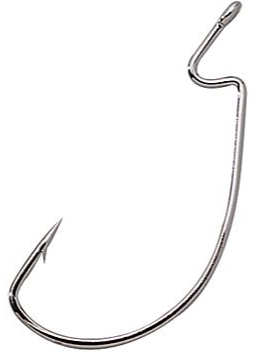
photo by Mystery Tackle Box
スポーニングとは何ですか?
Spawning is how bass reproduce. When a largemouth or smallmouth bass spawns, the female bass will find an area to lay her eggs (called a “bed”). The male then fertilizes the eggs. That’s where baby bass come from!
Techniques for bass fishing can differ greatly for pre-spawn (right before bass spawn) post-spawn (right after they spawn) and during the spawn itself.
スポーニングはバスが繁殖するための方法です。 ラージマウスまたはスモールマウスバスが産卵するとき、メスのバスは卵を産むエリア(「ベッド」と呼ばれます)を探します。 その後、雄が卵を受精させます。 そして赤ちゃんバスが生まれるのです!
バス釣りのテクニックとしては、プリスポーン(産卵前)、アフター(ポスト)スポーン(産卵後)およびスポーン中で大きく異なる可能性があります。
ベイトリールとスピニングリールの使い分けはどうしたらいいですか?
Bass anglers use both baitcasting and spinning tackle, but each set-up has certain advantages for different applications. Baitcasting gear is generally used for heavier line, 10 pound test and up. Baitcasters excel when anglers are using heavier baits like crankbaits, spinnerbaits, heavy jigs, topwaters, and other similar baits.
Most anglers use spinning tackle when employing such tactics as the drop shot rig, wacky rigging, and other more finesse-style presentations which are popular for both largemouth and smallmouth bass.
バスアングラーはベイトタックルとスピニングタックルの両方を使用しますが、それぞれのタックルはその用途ごとに有利な点があります。 ベイトリールは通常、10ポンド以上のヘビーラインに使用されます。 ベイトリールは、釣り人がクランクベイト、スピナーベイト、ヘビージグ、トップウォーターなどの重めのルアーを使用しているときに優れています。
多くの釣り人は、ラージマウスやスモールマウスバスに対してダウンショットリグ、ワッキーリグ、その他のフィネスプレゼンテーションを戦術として使うときに、スピニングタックルを使用します。
バックラッシュとは何ですか?
A birds nest (also known as “backlash”) is when the spool spins faster than the line is traveling, causing the fishing line in the reel to get twisted and knotted up
バックラッシュ(「鳥の巣」とも呼ばれる)は、ラインが放出されるよりもスプールが速く回転してしまい、リールの中のラインがグシャグシャに絡み合ってしまうことです。
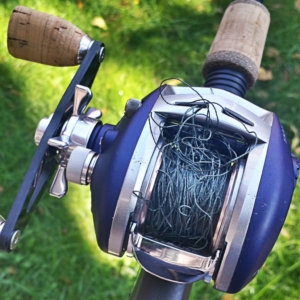
photo by Mystery Tackle Box
フロロカーボンライン、ナイロンライン、PEラインの違いって何ですか?
Fluorocarbon Line: Fluorocarbon sinks, which means it is not great for topwater baits, though it is great for reaction baits and soft plastics. It doesn’s stretch as much as monofilament, but it stretches more than braid. It is very clear and difficult for fish to see, making it ideal for finesse presentations.
Monofilament Line: Monofilament (mono) floats, so it is great for topwater baits like walk-the-dog baits and poppers. It also stretches a lot more than braid or fluorocarbon, which can be a good thing if you are fishing with reaction baits. The extra stretch allows the fish to get the bait in its mouth better. However, stretch can be a bad thing too, especially on long casts or with baits that require a strong hookset.
Braid Line: Braid has become much more popular in the last decade or so. It has virtually no stretch. Also, it is incredibly strong, much stronger than mono or fluoro with similar diameter size. However, braid is much easier for fish to see. This is why braid is often employed while fishing frogs and jigs in areas where there is a lot of vegetation. Many people also use braid in finesse situations, due to its sensitivity, and tie on a fluorocarbon leader to make it more difficult for fish to detect the line.
フロロカーボンライン:フロロカーボンは沈みますので、パワー系ルアー、リアクションの釣りやワームの釣りでは有効ですが、トップウォーターの釣りでは有効ではありません。ナイロンラインより伸びず、PEラインよりは伸びがあります。ラインの透明度により魚から見えづらく、フィネスな釣りにおいては理想的であると言えます。
ナイロンライン:ナイロンラインは浮きますので、トップウォータープラグのドッグウォーキングやポッパーなどに有効です。PEラインやフロロカーボンラインと比べて伸びがあるため、リアクション系ルアーにもいいと思われます。その伸びやすさのおかげで魚の口にルアーが入りやすくなりますが、ロングキャスト時のバイトや強いフッキングが必要なときなどはその伸びが仇ともなります。
PEライン:PEは、ここ10年ほどで人気が出てきました。実質的にラインの伸びはありません。また、それは信じられないほどに強く、同じ直径のナイロンやフロロカーボンラインより遥かに強いです。しかしPEラインは魚から発見されやすいとも言えます。そういうことから、ベジテーションエリアのフロッグやジグの釣りに使われています。また多くの釣り人はその感度の良さからフィネスフィッシングに使い、フロロカーボンラインをリーダーにすることによって魚からラインを発見させづらくしています。
何ポンドのラインを使えばいいのですか?
Much like other questions in fishing, the answer to this one is simple and complicated at the same time: it depends.
Since spinning reels are generally used for lighter baits and more finesse presentations, a good rule of thumb is line size between 6 and 12 lb monofilament or fluorocarbon and 10 to 30 lb braid is solid for spinning rods.
Baitcasting reels are used for more heavy or reaction-strike applications. You can use line anywhere from 10 to 25 lb monofilament or fluorocarbon, and 30 to 80 lb braid.
Here is a quick rundown of which line to use for which baits. You will notice that there are a lot of overlapping baits. For example, you can use a crankbait on fluorocarbon or monofilament line, it has more to do with preference. Also, these pairings are just suggestions of what traditionally works best. If you like to fish spinnerbaits on braid because it helps you rip it free from the grass, do it. Its all about confidence.
- Monofilament: Topwaters, Texas-rigged soft plastics, jigs, crankbaits, spinnerbaits, swimbaits.
- Flurocarbon: Texas-rigs, Carolina-rigs, wacky-rigs, shaky head, jigs, tubes, buzzbaits, crankbaits, spinnerbaits, jerkbaits, swimbaits.
- Braid: Frogs, toads, buzzbaits, topwaters, jigs, Texas-rigs, Alabama-rigs, flipping jigs.
ほかの質問と同じように、この質問の答えは非常に単純であると同時に複雑です。それは場合によるためです。
スピニングリールは通常、軽めのルアーやフィネスなプレゼンテーションに用いられるため、ナイロンかフロロラインであれば6から12ポンドの間がいいと思います。そしてPEラインであれば10から30ポンドがスピニングロッドに合います。
ベイトリールの場合はより重いルアーやリアクションバイト狙いで使用しますので、ナイロンやフロロなら10から25ポンド、PEなら30から80ポンドが、おおよその目安でしょう。
以下に、どのルアーでどのラインを使うかの単純な組み合わせを挙げますが、組み合わせが重複しているものがあることに気づきます。例えばクランクベイトはナイロンラインでもフロロラインでも使えますが、それは好みで構いません。あくまで伝統的な組み合わせ例であって、PEラインでスピナーベイトを使って草を切り裂きながら使うのが好きであれば、そう使えばそれでいいのです。それは信頼の問題です。
- ナイロンライン:トップウォーター、ワームのテキサスリグ、ジグ、クランク、スピナーベイト、スイムベイト。
- フロロカーボンライン:テキサスリグ、キャロライナリグ、ワッキーリグ、ジグヘッドリグ、ジグ、チューブワーム、バズベイト、クランクベイト、スピナーベイト、ジャークベイト、スイムベイト。
- PEライン:フロッグ、フロッグワーム、バズベイト、トップウォーター、ジグ、テキサスリグ、アラバマリグ、フリッピングジグ。
ノットは何を使えばいいですか?
There seem to be as many knots out there as there are baits. There are three times you will need to tie a knot in fishing, and here is a list of the top knots in each of the categories.
Loop knots: Many people use loop knots on topwaters and reaction baits because they give the bait more action. The King Sling is the best of these knots, with high ratings for braid, monofilament and flurocarbon.
Line to line knots: These knots are great when you are tying a leader. The two best knots of this kind are the Blood Knot and the Modified Albright.
Line to lure knots: These are the most common types of knots anglers must master. The Palomar Knot, the Improved Reverse Clinch Knot, and the Triple Loop Knot are some great ones to learn, with the Palomar Knot being the most universal.
多くのルアーがあるのと同じくらい、たくさんのノットがあります。 釣りをするためにノットを結ぶ必要があるタイミングは3回あり、それぞれの状況でおすすめのノットは以下の通りです。
ループノット:多くの人々は、ルアーに多くのアクションを与えるため、トップウォーターやリアクションベイトにループノットを使用します。 キングスリングノットは、PE、ナイロン、フロロカーボンにおいて高評価で、ループノットとしては最高です。
ラインとラインのノット:このノットは、リーダーを使用するときに有効なものです。 このためのベストなノットの2つは、電車結びとオルブライトノット改です。
ラインとルアーのノット:これは、釣り人が覚えなければいけない最も一般的なノットです。 パロマーノット、リバースクリンチノット改、トリプルループノットあたりがおすすめで、パロマーノットが最も一般的です。
リミットとは何ですか?
If you have ever watched a bass fishing tournament on TV, you have constantly heard phrases like, “I am just looking for a limit,” or “I need to get a limit early in the morning.” An angler catches a limit when he or she has caught the maximum number of fish he or she is allowed to weigh in at the scales. In the vast majority of tournaments, a limit is 5 fish.
トーナメントの模様をテレビで見ているとよく聞く言葉に「ちょうどリミットに達したところだ」とか「できれば午前中にリミットを揃えたい」というものがあります。アングラーがウェイイン(計量)できる最大匹数には制限(リミット)があるのです。多くのトーナメントの場合、そのリミットは5匹です。
”カル”とは何ですか?
Again, if you have ever watched a bass fishing tournament on TV, you have heard the word “cull,” as in, “I have limit, I just need to catch a big one so I can cull that little one.” Culling is the act of releasing your smallest fish from your livewell and replacing it with a bigger fish you have just caught.
また、同じくテレビなどで「リミット達成、ちょうど今大きいのが釣れたから小さいのとカルできるね」というように「カル」という言葉も良く聞きます。カルとは、ライブウェルにいる最も小さい魚を出して、今釣れたばかりの大きな魚と入れ替えることです。(また、このときの大きな魚の方を指して「キッカーフィッシュ」と呼びます。小さいほうの魚をライブウェルから蹴り出すという意味で使われ、「キッカーフィッシュが来た!」「キッカーが釣れたので入れ替え」という使い方をしています)
ライブウェルとは何ですか?
A livewell is a compartment inside a bass boat that can be filled with water to hold fish. As the name suggests, the livewell keeps fish alive by circulating fresh water.
ライブウェルは、魚を生かしておくためにバスボート内に装備された水槽のことです。 名前が示すように、ライブ(生きている)ウェル(泉)は、淡水を循環させることによって魚を生かしておけます。
バイトはどうやって気づけばいいですか?
If you are using a cast-and-retrieve type lure such as a crankbait or spinnerbait, oftentimes a bite will just feel like “mushy” weight on the line. When bass are extra-aggressive, they will really smack your bait, making it easy to tell you have a bite. Big bass sometimes “knock slack” in your line. This bite is more difficult to detect, but the telltale sign occurs when you are retrieving your bait and it suddenly feels weightless, like your line has been cut.
When you are using slower-moving baits like soft plastics or jigs, bites feel more like a ‘shump thump” on your line. Sometimes, you may not feel anything at all! In this case, it helps to be a “line watcher.” If you see your line jump or start moving off to the side, then you can bet you probably have a fish on.
クランクベイトやスピナーベイトのような投げて巻く系のルアーを使用している場合は、バイトがあればだいたい「グン!」と重くなることが多いです。 バスがアグレッシブであれば、ルアーをまさにひったくるように感じるほどで、バイトだということが簡単にわかります。 ビッグバスの時はたまにあなたのラインを “たるませる"だけの場合があります。 このバイトは感じるのがより困難ですが、ルアーをリトリーブしているときに兆候(前アタリ)が現れ、突然ラインが切れたように重みを感じなくなります。
ワームやジグのような動きの遅いルアーを使用しているときは、ラインが「ドゥンドゥン」というふうに感じます。 時には何も感じることすらありません! そういう場合は “ラインを見ること"が役立ちます。ラインが跳ねるのを見たり、横移動をし始めたとき、おそらく魚が食っている可能性があります。
フッキングとは何ですか?
A “hook set” is one of the most essential techniques in bass fishing. Setting the hook is when you ensure your bait properly hooks the fish so it does not get away when you are reeling in your line.
フッキングは、バスフィッシングの最も重要な技術の1つです。 フッキングとは、フックをしっかりと魚に引っ掛けることであり、魚とのやり取りの間に魚に逃げられないようにすることです。
フッキングはどうすればいいですか?
With a crankbait, it is not necessary to jerk the rod hard when you detect a bite. Instead, simple “lean” into the fish by pulling the rod further in the direction you are already reeling. You can use the same technique with spinnerbaits, but jerk slightly harder to get greater penetration.
Soft plastics and slow moving baits like jigs require a more aggressive hookset than cast-and-retrieve lures. After you have detected a bite, reel in any slack that you may have in your line, lower your rod tip to about a 3 o”clock position, and quickly jerk the rod upward toward a 12 o”clock position.
While topwater bites are the easiest to see, setting the hook can be the most challenging. When a bass attacks a topwater bait, oftentimes they strike it to kill it first, not necessarily to eat it. For that reason, you have to be more patient when setting the hook. The first rule of thumb is to wait until you actually feel the weight of the fish on the end of your line. The second is to count two seconds in your head before setting the hook. Even if a bass misses it the first time, the will often strike multiple times on a topwater bait!
クランクベイトを使っていてバイトを感じた時はそれほど大きくアワセる必要はありません。今巻いている方向へさらにグイッとロッドを傾けて引っ張れば良いのです。スピナーベイトの場合も同じですが、より深く刺すためにもう少し激しくフッキングするのがいいでしょう。
ジグのような遅いルアーやワームを使っている場合は、巻きモノ系のルアーの時よりもより積極的なフッキングを必要とします。バイトを感じたら、ラインのたるみを巻き取り、ロッドを3時の方向に傾け、12時の方向へ素早くジャークしてください。
トップウォーターの場合はバイトが見えるので簡単そうですが、フッキングさせるには実は最もチャレンジングです。バスが水面のルアーを攻撃するとき、よく彼らは最初にそれを殺すために叩いてきます。必ずしもそれを食べるというわけではありません。そのため、フッキングするまでにはより忍耐強くなければなりません。経験から言えることのひとつとしては、ラインを通して魚の重みが伝わるまで待つことです。2つ目は、アワセを入れる前に頭の中で2秒数えることです。
もしバスが初めのバイトでミスっても、まだ何回かバイトしてくることもよくあります!
フッキングがうまく行ったら、どうやってランディングすればいいですか?
So your hooked up with a bass, what now?! Here are just a few tips for getting the bass to the boat or the bank.
- Never “horse” it in – There is no time limit or shot clock. Allow the fish to wear itself out instead of just cranking it in as fast as possible.
- Prevent the fish from jumping – Bass jump out of the water when they are hooked. While this is an exciting spectacle, it is also the most dangerous part of the battle. Bass jump because they have more leverage to “throw” the hook out of the water than they do in the water. For this reason, keep your rod tip low and so that the fish is less likely to jump.
- Releasing the Fish – Here at Mystery Tackle Box, we like to support the catch-and-release of bass. This helps ensure the continued success and enjoyment of the sport of bass fishing. Simply snap a few pictures (for bragging purposes and evidence) and release the fish as quickly as possible.
いざバスがフッキングできたら、どうしたらいいのでしょうか? ここでは、バスをボートや岸にランディングするためのヒントを紹介します。
- 決して慌ててはいけません – 時間制限や時間稼ぎをしてはいけないルールはありません。 全力で巻き続けるのではなく、魚を疲れさせるようにしてください。
- 魚がジャンプするのを防ぐ – バスをフッキングするとジャンプしようとします。 これはこれでエキサイティングな光景ですが、ファイトの中でも最も危険なときです。 水中でやるよりも空中の方がフックを「飛ばしやすい」ため、バスはジャンプします。 ですのでロッドティップは低くし、魚がジャンプする可能性を少なくします。
- 魚をリリースする – この記事では、バスのキャッチ・アンド・リリースを推奨しています。 これは、バス釣りというスポーツの継続的な成功と楽しみを確実にするのに役立ちます。 自慢と証拠のための何枚か写真を撮ったら、できるだけ早く魚をリリースしましょう。
過去最大のバスとはどれくらいですか?
There is a tie at the top of the bass fishing world for who has the biggest largemouth bass. The longstanding record has been help by a man named George Perry. His legendary catch, a 22-4 pounds largemouth in 1932, was caught in a small oxbow lake in Georgia. In 2009, Manuba Kurita caught a bass in Japan’s famed Lake Biwa that bested Perry’s record and weighed closer to 22-5 pounds. However, they are officially considered tied because the IGFA requires a fish to be a full 2 ounces larger for gamefish under 25 pounds to be considered the sole record holder.
バス釣り界で世界最大のラージマウスバスはトップタイ記録があります。 長年にわたる記録はジョージ・ペリー(George Perry)という男性が持っていました。 彼の伝説は1932年、22ポンド4オンスのラージマウスがジョージア州の小さなオックスボーレイクでキャッチされたことで生まれました。 2009年、栗田学は、ペリーの記録を負かし、22ポンド5オンスに迫るウエイトのバスを日本のあの琵琶湖でキャッチしました。 しかしIGFAでは、唯一の記録保持者と見なされるためには25ポンド未満の魚に対しては2オンス以上の差を必要とするため、公式にはタイ記録とされています。
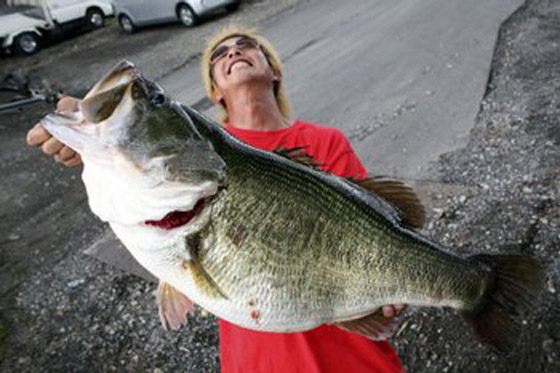
photo by Mystery Tackle Box
オカッパリでもビッグバスは釣れますか?
Absolutely! Big bass can definitely be caught from shore. Spring and fall months are the best months to catch lunkers in the shallows, but you can catch them among cover near the bank throughout the year!
もちろんです! ビッグバスは間違いなく岸からでもキャッチすることができます。 春か秋がシャローのランカーをキャッチするのに最適ですが、一年中、岸近くのカバーの中で釣ることもできます!
いかがでしたか。
アメリカの記事をそのまま引用していますので、日本とは意味やニュアンス、イメージや感覚が食い違っていたりするものがいくつかあったかもしれません。
アメリカから来た言葉が非常に多いので、理解するのがちょっと難しい面がありますよね。
バス釣り用語には大きく分けて2種類あって、1つは物を指すもの、もうひとつは物以外の状態や行動を指すものです。
このうち、フック、ノット、リール、リミットなど、物を指すものはそのまま使えるものも多いのですが、物以外のバス釣り用語…たとえば、フッキングとか、ランディング、などといったことは、行動を指すものですので、その人によって違うこともありますし、時と場合にもよります。またこの記事は用語解説でもありハウトゥ記事でもありましたから、なおさら、食い違いが生まれてしまうこともあるのではないかと思います。
ただ、用語のニュアンスなどの食い違いがあったとしても、それは上級者になるほど出てくるものだと思いますので、そういう方でしたら食い違いを自己修正されることも簡単でしょうから、ご自身で判断されてもいいのではないかと思います。
初心者さんにおかれましては、この記事に出てきたもの以外にもまだまだバス釣り用語はありますから、なにか知らない用語が出てきたらスルーせずに、ぜひインターネットなどで調べてみてください。そういうのも、おもしろいと思います。
また、世界最大のバスの栗田学さんの写真。やっぱりすごいですよね。このインパクトは世界中どこへ行っても食い違うことのないものではないでしょうか。
本当に、すごいです。
それでは、また。
毎度ありがとうございます!





